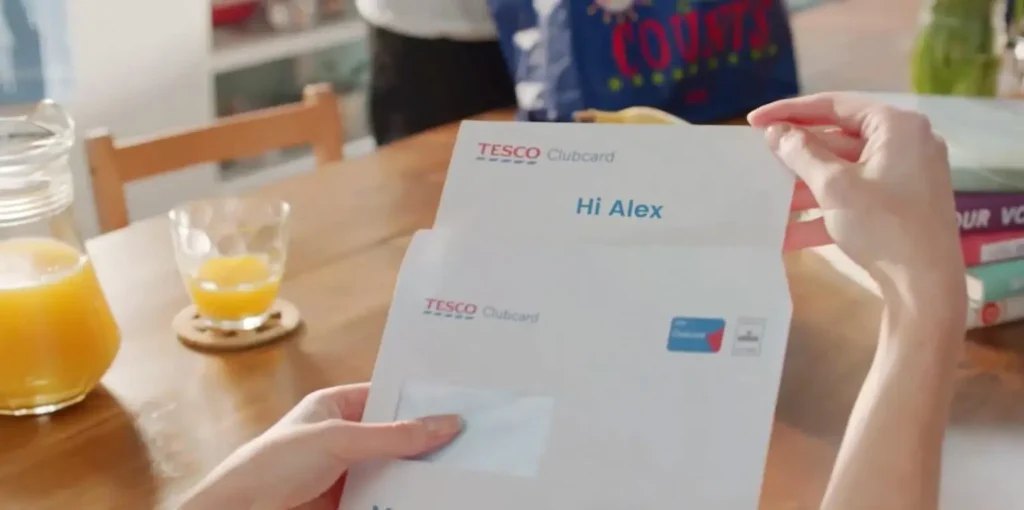Brands worldwide have tapped into the power of marketing personalization and its ability to improve customer experience, drive revenue and create consistency across channels. A whopping 89% of leaders believe personalization is crucial to their business’ success in the next 3 years.
Across industries, brands large and small are scrambling to incorporate an ever-stronger personalization focus into their marketing efforts. With consumers expecting tailored messaging and seamless experiences, a well-crafted personalized marketing strategy has become a must. And while some have tried and failed, there are a few brands out there that have nailed the concept almost flawlessly.
Here are 4 examples of personalized marketing campaigns from brands that took things to the next level.
1. Orangetheory Fitness Gets to the Heart of It
For a brand whose winning formula is rooted in something as personal as your health, data-driven marketing personalization just made sense for Orangetheory Fitness.
Experts at leveraging heart and caloric burn rate data to empower members to understand their workout and goals better, the fitness brand took the same approach when designing its year-in-review campaign.
To increase attendance and inspire its members to keep at their goals in the new year, the brand drew from its customer data to create personalized music videos that highlighted each member’s fitness achievements.
But that wasn’t even the most impressive part. In doing so, Orangetheory took personalization to a completely new level by creating unique soundtracks that matched each member’s BPM.
These special tracks were brought to life with visuals and data points uniquely personalized for each member, including the number of workouts, calories burned and challenges completed. The personalized messages more than paid off. In the launch week alone, Orangetheory Fitness achieved:
- over 45,000 additional classes booked
- a record-high 97% attendance rate
What made this campaign so impactful was its focus on the individual customer rather than a broad segment. Unlike traditional advertising, which might rely on demographics and other customer segmentation models to create personalized ads for a target audience, Personalized Videos are 1:1 interactions.
By delivering a personalized experience with dynamic content, the brand surprised and delighted its members, strengthening customer loyalty and keeping them engaged with the Orangetheory Fitness community.
2. easyJet Celebrates 20 Years of Memories
To mark its 20th anniversary, low-cost airline easyJet launched a highly personalized marketing campaign that engaged customers emotionally by showcasing their travel experiences with the airline and suggesting places they could next travel. Those recommendations were, of course, based on the customer’s personal experiences and interests, using purchase history and behavioral data to ensure relevance.

The easyJet team made their customers feel part of the airline’s history through personalized email marketing. With a strong focus on customized copy and eye-catching visuals, they crafted a series of emails based on customer data, telling stories about traveling with easyJet that were unique to each customer.
They paired that personalized email campaign with a commercial showing one family’s journey. (Although we think it would have been even better if the video were personalized.)
On social media, the brand invited customers to share their favorite holiday photos from an easyJet trip using the #TimeFlies hashtag, planning to print each photo on a plane as part of a giant memory mosaic.
Asking easyJet fliers to get involved sparked an organic, customer-driven snowball effect. With personalization driving the project, the responses and results were phenomenal:
- The social media campaign reached an estimated 685,000 people and gained more than 1.1 million impressions.
- The email campaign saw open rates over 100% higher than their average newsletter and 25% higher click-through rates.
- Globally, over 7% of easyJet customers who received the personalized campaign made a booking within 30 days. And compared to promotional emails sent in the same time period, the personalized message was 14x more effective in triggering an action.
The campaign was expertly crafted to instill a sense of nostalgia, reminding the audience of the role easyJet played in their favorite trips and ensuring that the airline would be the first pick for the customer’s next vacation.
But easyJet isn’t the only brand using personalized content to drive conversions. Another standout example comes from O2, a telecommunications company that leveraged dynamic video ads to boost customer engagement and improve sales.
Aimed at promoting their Refresh program, where customers can easily trade in their device, this digital marketing campaign featured thousands of Personalized Videos generated in real-time for individual customers.
By analyzing consumer data to identify suitable product recommendations, pricing and savings details and even the viewer’s nearest O2 store, the campaign encouraged retention by streamlining the customer journey.
The result? The brand saw an 11% increase in conversions, with 72% of viewers engaging with their video and clicking the CTA.
3. Personalized Video Reaps Sweet Rewards for Cadbury
Cadbury, one of the largest confectionery brands in the world, is renowned for its creative and novel approaches to marketing.
Recognizing the unprecedented effectiveness of marketing personalization in connecting customers emotionally with brands, Cadbury launched a personalized campaign to promote its new line of Dairy Milk flavors to the Australian market.
For the campaign, Cadbury created a “Flavor Matcher” app, which leveraged data-driven personal profiling to match users with 1 of 12 different flavors. Users then received Personalized Videos celebrating their Flavor Match that integrated their Facebook profile photo. They were encouraged to share the video with a hashtag created for the campaign — and they did!
But that wasn’t the only campaign to shine. Cadbury also launched a successful Personalized Video campaign in India, aimed at promoting the idea of giving chocolates as gifts.
Data collection for the videos was simple. Users just had to visit the Cadbury Glow landing page, link their Facebook profile and enter the phone number of the gift recipient. From there, they could generate a Personalized Video that incorporated photos and names pulled from their Facebook.
Once the recipient received their box of Cadbury Glow chocolate, they were invited to watch their video by scanning a QR code or entering their phone number on the Cadbury Glow page.
The campaign resonated with customers’ sense of sentimentality and appreciation for novelty, both of which have become synonymous with the Cadbury brand. Combining the compelling nature of video with the uniqueness of personalization captivated viewers. With this incredible campaign, the brand saw the following results:
- 90% of viewers watching their Personalized Video to completion
- A 65% CTR from campaign recipients
- A 33% conversion rate from viewers who completed a subsequent promotion form
Cadbury did a great job showing that, even in industries that are typically light on CRM data, it’s possible to deliver personal and engaging experiences that wow customers.
4. Nike Outdoes Expectations With Dynamic Video
Another excellent example of hyper-personalized video marketing comes courtesy of sportswear giant Nike and their year-end “Your Year” campaign.
In a bid to appeal directly to its biggest fans and most social users of their apps, the brand dug deep into the data accumulated through its exercise-tracking products, such as the Nike+ Running mobile app, which consistently tracks users’ performance.
Nike then used the data to craft over 100,000 supremely detailed personalized animated videos. The animated videos captured each individual’s athletic achievements from the year and formed the crux of a major campaign that encouraged people to “Outdo You.”
These videos even factored in the location of where people worked out, incorporating associated landmarks and local weather in the animations. These small but powerful touches made the user experience feel deeply personal and rewarding, reinforcing Nike’s position as a brand that truly understands and celebrates its customers.
At the beginning of the new year, a time associated with renewed resolve and dedication, the Nike team sent these Personalized Videos to every single one of their active Nike+ users, as well as widely disseminating a more generic version of the video across its social media platforms.
The dedicated community of Nike+ members went online en masse to share their opinions — and pledge to achieve the goals identified by their data.
Post on
Nike wasn’t the only iconic sportswear brand that looked to marketing personalization. As a sponsor of the Boston Marathon, adidas tackled the challenge of creating Personalized Videos for more than 30,000 runners within hours of them completing the race, a campaign that helped drive product sales from email up an astonishing 1,189%!
These campaigns demonstrate the power of Next Generation Video, which surpasses traditional video capabilities by being personalized, as well as interactive and adaptable. And, thanks to AI, brands can now produce Next Gen Video campaigns at scale and with greater efficiency than ever before.
For instance, Lucas, our AI video creator can use automation to create millions of videos with ease. With a focus on speed and quality, Lucas is a movie director and producer rolled into one, pulling footage and voiceovers from best-in-class providers. Better yet, he’s checked his ego at the door and is receptive to any and all guidance and rules provided by its users.
Bonus: Coca-Cola’s Share a Coke Campaign
While it’s certainly an older example, a round-up of the top personalized marketing campaigns would be incomplete without mentioning Coca-Cola’s iconic campaign.
In 2011, Coca-Cola launched its “Share a Coke” campaign for the very first time in Australia. Hoping to appeal to younger consumers, the brand produced personalized Coke bottles adorned with 250 of the most popular names and nicknames used by millennials, including Bestie and Wingman.
Beyond customized bottles, Coke also created interactive billboards and websites, as well as traveling kiosks where people could get more uniquely named Coke products. With a small but impactful tweak, the brand turned everyday products into something meaningful and instantly shareable.
The effect was game-changing. Despite a dwindling soda industry on the wrong side of the millennial health and fitness fad, the campaign in Australia led to a 7% increase in Coke consumption. Encouraged by the overwhelming success, Coca-Cola then decided to roll out the campaign in the U.S. in 2014, a move that ultimately led to a 2.5% increase in total sales.
Coca-Cola’s marketing team threw all their weight behind its personalization strategies, and it paid off in a major way. The success of the campaign taught marketers worldwide that people love personalized products — especially when they are unexpected.
Having a mega-brand like Coca-Cola make the effort to print individual names on bottles made customers feel valued and sparked an organic social media campaign that ultimately led to increased sales in the U.S. for the first time in roughly 4 years.
By giving customers a reason to engage organically with the brand, Coca-Cola sparked a global movement. People eagerly shared photos of their personalized bottles, posted videos when they found their names on a can and even gifted Cokes to their friends and family. This user-generated content became a huge driver behind the campaign’s success, essentially turning casual customers into brand ambassadors.
All in all, while implementing personalized marketing campaigns may seem complex and daunting, it doesn’t have to be. Sometimes, the simplest ideas — like adding a name to a bottle — can drive engagement and brand loyalty. The rewards for hitting a home run are endless, from casual customers turning into brand ambassadors to unparalleled engagement and a wow factor that immediately upgrades your CX.
Time To Get Personal
Personalized experiences are everywhere. Whether it’s Netflix’s recommendation algorithm or Spotify’s curated playlists, today’s consumers expect brands to deliver relevant content at every turn. In other words, personalization is the new standard. And as the personalized marketing examples we covered show, when brands get it right, the results can be transformative.
From easyJet’s data-driven approach to Coca-Cola’s iconic name campaign, the best campaigns are no longer about just passively pushing marketing messages. They happen in real-time, across multiple touchpoints and with the customer at the center.
If you’re ready to bring this level of personalization to your brand, we’ve got you covered. Whether you want full creative control or need some help via AI, templates and more, our Next Generation Video Platform has everything you need to make Personalized Video easy, scalable and effective.






